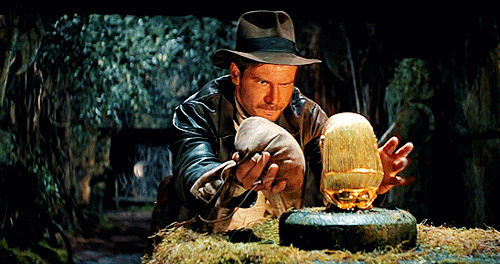Those who disagree with the the LDS Church on certain policies and positions, especially its stance on homosexuality and same-sex marriage, but also on various other policies that clash with current liberal cultural trends, often cite the Church’s former Priesthood Restriction as a precedent for the church to make further changes to accommodate their views.
In fact, for many of them the Priesthood Ban has become a useful hammer that they employ to drive their agenda. It has become a kind of folklore for heretical members of the church that is used to prop up and justify their agitation for change and rejection of prophetic authority.
The folklore goes something like this:
“Brigham Young, the second prophet and president of the church, was a terrible racist and instituted a church policy that banned black members from being ordained to the priesthood. Many doctrinal and scriptural justifications were given for the ban during the subsequent decades, but it was really only based on the racist notions common to the culture and religions of the time. In the years leading up to 1978 when the ban was finally ended, many good members of the church, including general authorities, were troubled by the restriction and questioned its origins, and some righteous souls even publicly agitated for it to end. In response to the growing challenge from members and the success of the Civil Rights movement the church lifted the ban and admitted that the scriptural and doctrinal justifications for it were wrong.”
Much of the time this narrative is taken for granted and the argument is simply made by referring to it, like this: “Just like the Brethren were wrong about the priesthood ban, they are wrong about homosexuality, and will eventually change and disavow the previous doctrines.”
This appeal to the priesthood ban as a precedent for additional changes leaves out a couple of key details that undermine the parallelism to these modern trends.
From the very beginning of the priesthood restriction, Brigham Young himself prophesied that the “time will come when [black members] will have the privilege of all we have the privilege of and more.” (February 5th, 1852 Speech before the Territorial Legislature). Subsequent prophets reiterated this prophecy that eventually the Lord would lift the ban and the priesthood would be bequeathed to all. Many of them didn’t believe it would happen until the Millennium, after Jesus returned.
In addition to the prophecies, we have very solid historical examples of black men being ordained to priesthood offices by the prophet Joseph Smith himself before the priesthood restriction was declared by President Young.
These are essential details. The disagreement in the decades culminating in ending the restriction was about the the validity of the reasons that had been suggested for the restriction, or whether or not blacks really were descended from Cain or Canaan, the proper time frame for lifting the ban, and whether it could be ended without an explicit revelation. But the idea that the priesthood could be and would be extended to blacks at the proper time was not in dispute. That is why in Official Declaration 2, in which the end of the restriction was announced, President Kimball specifically refers to these prophecies when he says they are “Aware of the promises made by the prophets and presidents of the Church who have preceded us…” and says “the long-promised day has come…”
It is this concept of an explicitly “long-promised day” that is missing from the appeals for additional changes in the church to accommodate modern sensibilities. Putting aside controversies about whether or not the priesthood restriction was a mistake or an inexplicable decree from the Lord, the priesthood was always supposed to be extended to black members eventually.
A similar example of a “long promised day” is the extension of the gospel to the gentiles by the prophet Peter. Jesus himself had prophesied that the gospel would eventually go to the gentiles, both before His crucifixion and then again after His resurrection. So when Peter received his vision and then extended the gospel to Cornelius the Centurion and his household, upon whom the Holy Spirit had fallen, it fulfilled the earlier prophecy. Putting aside controversies over whether gentile converts needed to be circumcised, the gospel was supposed to be extended to the gentiles eventually.
There is no “long-promised day” prophesied by latter-day prophets and presidents that preceded us to which one might appeal for same-sex marriage. Neither are their solid historical examples of Joseph Smith approving of or sanctioning homosexual relationships in the way that there are of extending the priesthood to black members.
For these reasons lifting the priesthood ban is not really comparable and cannot be legitimately cited as a good precedent for new changes through agitation and public pressure by liberal members of the church.
For an excellent, faithful perspective on the priesthood ban, check out Thirty Years After the Long Promised Day: Reflections and Expectations (PDF) by brother Marcus H. Martins, who was the first black LDS member to serve a full-time mission after the restriction was ended.
UPDATE 4/2014: Since this was written, some wonderful additional materials about the Priesthood Ban have been published. Please see my more more recent post:
Faithful LDS Perspectives on Race and the Priesthood



6 Responses to The Long Promised Day: Why the LDS Church Priesthood Ban is NOT a Hammer for Your Liberal Wedge Issue